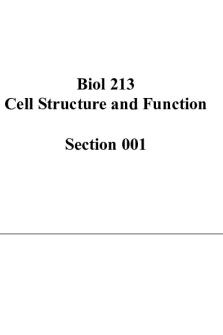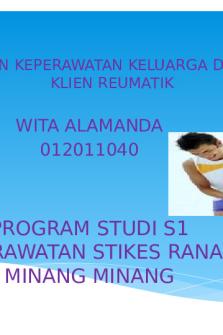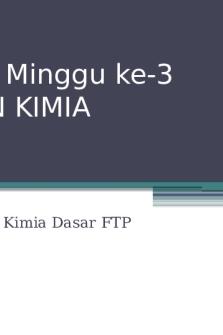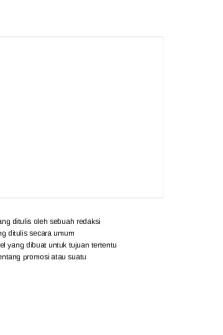Nervous System Power Point Notes PDF

| Title | Nervous System Power Point Notes |
|---|---|
| Author | Juan Huertas |
| Course | Bio Of Invertebrates |
| Institution | Baruch College CUNY |
| Pages | 8 |
| File Size | 437.3 KB |
| File Type | |
| Total Downloads | 90 |
| Total Views | 143 |
Summary
NOTES...
Description
PowerPoint Notes: Ch 35 – The Nervous System The Nervous System 1. Functions Controls and body and
___________ ________
throughout the internal and external
___________________. Neurons – specialized __________ that_____________________ __________________________ in the Nervous System Types of neurons: 1. ___________________- carry impulses from the ___________________ ________ the spinal cord and 2.
.
- carry impulses from the
and
spinal cord 3.
. - _______________________________________
________________ and carry impulses between them.
D. Structure of neurons: 1. _____________________________ 2. _____________________________ 3. 4. 5.
- carries impulses ______________ the cell body. - carries impulses ___________ from the cell body. - covers part of some axons.
6. – at the end of the axon (__________________) E. Nerve Impulse- ______________________________ conducted along a nerve fiber. 1. resting potential- the electrical charge across the cell membrane of a neuron in its resting state.
2.
- the reversal of charges, from negative to positive _____________________________
3.
- the minimum level of stimulus that is required to activate a neuron
4. The
a. All or none!
- the
at which a neuron can to another cell. (
between an axon of one neuron
and the dendrite of the next) a.
- a _________ __________ by the neuron ____________ _________________ across the synapse to another cell.
II. Divisions of the Nervous System - The nervous system has two major divisions: the A. The central nervous system ( the
and the ____________________ ) - is made up of .
1. Functions: a. sends _______________________ b.
information
and
c.
information
B. The brain- is the place to which impulses flow and from which impulses originate. The brain contains approximately 100 billion neurons, many of which are interneurons. Regions of the brain a. The _____________- controls b. The
(thinking, memory)
- coordinates _______________ actions.
c. The
- controls
(breathing).
d. The thalamus- receives impulses from the senses and sends them to the cerebrum. e. The hypothalamus- connects the nervous and endocrine systems. C. The
-
the brain with the . Some reflexes are processed in the
spinal cord. 1.
- is a ___________________________________ to stimulus. (sensory, spinal cord, interneuron, motor)
D. The
nervous system (
)- transmits impulses
from sense organs to the central nervous system and back to muscles or glands. 1. The
- sends impulses from the sensory
neurons to the CNS 2. The
- sends impulses from the CNS to muscles and glands. a. somatic- control voluntary actions. b. autonomic- regulates activities that are automatic The Nervous System is divided into
which consists of
that make up
which is divided into
** Think about tying the shoelace of a sneaker. Construct a flowchart that shows what happens between your eyes and your brain, and between your brain and your hands, when you tie a bow in the shoelace.
III.
The Senses
A. Sensory receptors- are ______________________________________ _____________________________ in the environment . These receptors send impulses to the central nervous system.
5 types of sensory receptors: a. _________________ receptors- respond to pain. b.
receptors- respond to temperature.
c.
receptors- respond to pressure.
d.
receptors- respond to chemicals.
e.
receptors- respond to light.
B. The sensory organ responsible for vision is the eye. 1.
- is a small opening that controls the amount of light
2.
– focuses light on retina
3.
- contains photoreceptors a.
- sensitive to light, but no color vision
b.
- less sensitive to light, but see color
C. Hearing and Balance are the functions of the ear 1.
waves enter auditory canal
2. Tympanum vibrates small bones (
)
3. stirrup sends vibration to _______________________ 4. cochlea sends impulses to brain
D. Balance 1.
– 3 tiny canals at right angles to each other
2. Fluid in canals
which send impulses to brain
3. Impulses tell brain about body position and motion E. Smell and Taste 1. Taste and smell are ______________________________ 2.
of many foods
3. Sense organs (taste buds) located on the tongue detect _______________________ a. ___________ b. ___________ c. ___________ d. ___________ 4. All tastes are combinations of these 4 F.
and related senses 1. Receptors __________________________ 2. respond to: a. _______________________ b. _______________________ c. _______________________ 3. density of receptors differ
Your senses—sight, hearing, smell, touch, taste—are constantly receiving information about your environment. Even if you are not thinking about it, your body is sensing and responding to conditions around you, such as the temperature of the room. 1. List ten things you observe about the room you are in. 2. Next to each observation, write the sense that you used to make that observation. 3. What sense did you use most?
IV. Drugs and the Nervous System A.
- any substance, other than food, that __________ ______________________ of the body. Several types of drugs affect the nervous system.
1. ______________________ - increase heart rate, blood pressure and breathing rate. 2. ______________________ - decrease heart and breathing rates, lower blood pressure, relax muscles and relieve tension. 3 ______________________- act like natural brain chemicals (endorphins) which help overcome pain. Drug Type
Medical Use Used to increase alertness, relieve fatigue
Depressants
Opiates
Used to relieve pain
Examples
Effects on the body
Amphetamines
Increase heart and respiratory rates; elevate blood pressure; dilate pupils; decrease appetite
Barbiturates Tranquilizers
Slow down the actions of the central nervous system; small amounts cause calmness and relaxation; larger amounts cause slurred speech and impaired judgement
Morphine Codeine
4.
- can cause memory and concentration problems.
5.
- is a depressant that slows down the rate at which the central nervous system functions.
V.
- is the
of any
drug for non- medical purposes. A.
- is an ________________________________ on a drug.
Suzanna Macedo 2010...
Similar Free PDFs

Nervous System Power Point Notes
- 8 Pages

MCED Power Point notes
- 13 Pages

Nervous System Notes & Summary
- 6 Pages

Nervous System Notes
- 12 Pages

Nervous system
- 15 Pages

Nervous system
- 14 Pages

Nervous System
- 4 Pages

Power Point Outline
- 1 Pages

Power Point tanya - MEDICINA
- 6 Pages

power point Ascaris lumbricoides
- 19 Pages

Power point chapter 1
- 71 Pages

Power Point 1 Introduction
- 1 Pages

Power point rematik wita
- 7 Pages

POWER POINT IKATAN KIMIA
- 27 Pages
Popular Institutions
- Tinajero National High School - Annex
- Politeknik Caltex Riau
- Yokohama City University
- SGT University
- University of Al-Qadisiyah
- Divine Word College of Vigan
- Techniek College Rotterdam
- Universidade de Santiago
- Universiti Teknologi MARA Cawangan Johor Kampus Pasir Gudang
- Poltekkes Kemenkes Yogyakarta
- Baguio City National High School
- Colegio san marcos
- preparatoria uno
- Centro de Bachillerato Tecnológico Industrial y de Servicios No. 107
- Dalian Maritime University
- Quang Trung Secondary School
- Colegio Tecnológico en Informática
- Corporación Regional de Educación Superior
- Grupo CEDVA
- Dar Al Uloom University
- Centro de Estudios Preuniversitarios de la Universidad Nacional de Ingeniería
- 上智大学
- Aakash International School, Nuna Majara
- San Felipe Neri Catholic School
- Kang Chiao International School - New Taipei City
- Misamis Occidental National High School
- Institución Educativa Escuela Normal Juan Ladrilleros
- Kolehiyo ng Pantukan
- Batanes State College
- Instituto Continental
- Sekolah Menengah Kejuruan Kesehatan Kaltara (Tarakan)
- Colegio de La Inmaculada Concepcion - Cebu

